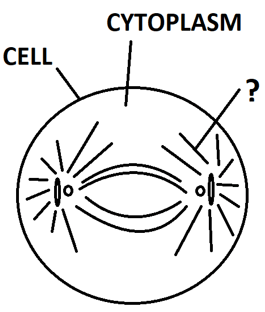This set of Class 11 Biology Chapter 10 Multiple Choice Questions & Answers (MCQs) focuses on “Cell Cycle and Division – M Phase-1”.
1. Which of these is the most eventful period of the cell cycle?
a) G1 phase
b) G2 phase
c) S phase
d) M phase
View Answer
Explanation: G1 phase, G2 phase and S phase are stages of the resting phase, known as interphase. Although cell growth and DNA replication take place during interphase, it is lesser than the events taking place during mitosis or M phase.
2. What is the phenomenon of nuclear division known as?
a) Telekinesis
b) Cytokinesis
c) Karyokinesis
d) Autokinesis
View Answer
Explanation: The phenomenon of nuclear division is known as karyokinesis. Cell division is known as cytokinesis. These events take place in the cell during mitosis. Mitosis is terminated with cell division or cytokinesis.
3. Which of these events is not a part of karyokinesis?
a) Metaphase
b) Prophase
c) Interphase
d) Anaphase
View Answer
Explanation: Interphase or the resting period is not a part of karyokinesis. Karyokinesis involves nuclear division. The stages of M phase, namely, metaphase, anaphase and prophase are a part of karyokinesis.
4. In which phase is chromosome condensation initiated?
a) Prophase
b) Metaphase
c) Anaphase
d) Telophase
View Answer
Explanation: Initiation of chromosomal condensation takes place in the M phase of the cell cycle. It marks the starting of cell division. Hence, it takes place in the first stage of M phase, that is, prophase.
5. What happens to the chromosome during chromatin condensation?
a) It becomes tangled
b) It becomes detangled
c) It undergoes temporary denaturation
d) It undergoes inactivation
View Answer
Explanation: The densely coiled chromatin or chromosome fibers become detangled during the condensation of chromatin. This is an early event of the cell cycle and takes place in the prophase phase.
6. In which phase do the centrosomes start moving to the opposite poles of the cell?
a) Anaphase
b) Metaphase
c) Prophase
d) Telophase
View Answer
Explanation: The centrosome is located just outside the nucleus. During S phase, it undergoes replication. During prophase of M phase or mitosis, they start moving towards the opposite ends of the cell.
7. Which of these structures is the site of attachment of chromatids?
a) Centromere
b) Aster
c) Kinetochore
d) Centrosome
View Answer
Explanation: Chromatids are attached to each other at the centromere. Kinetochores are the point of attachment of chromatids on the spindle fibers. Centrosome is a structure present outside the nucleus.
8. What are asters made of?
a) Collagen
b) Intermediate filaments
c) Actin fibers
d) Microtubules
View Answer
Explanation: Asters are made out of microtubules, which are a type of cytoskeletal proteins of the cell. Asters radiate from centrosomes on the opposite poles of the cells during the M phase of cell division.
9. What are the constituents of the mitotic apparatus?
a) Chromatids, Centrosomes
b) Chromatids, Spindle fibers
c) Asters, Spindle fibers
d) Kinetochores, Centrosomes
View Answer
Explanation: The mitotic apparatus consists of asters and spindle fibers. Asters radiate out from the centrosomes present on the opposite poles of the cell. They are made out of microtubules which are cytoskeletal proteins.
10. Distinct DNA is observable in G2 phase of cell cycle. True or false?
a) True
b) False
View Answer
Explanation: The G2 phase of the cell cycle is a part of the interphase or resting phase. The chromosome is tangled and intertwined. Hence, distinct strands of chromosomes are not observable.
11. Which of these structures are visible under the microscope at the end of prophase?
a) Nucleolus
b) Endoplasmic reticulum
c) Golgi bodies
d) Asters
View Answer
Explanation: Prophase is the first phase of the M phase or the mitotic phase. At the end of prophase, the nucleolus, Golgi bodies and the endoplasmic reticulum are not visible. Asters are visible. They radiate in all directions from the centrosomes.
12. In which phase does the nuclear envelope disintegrate?
a) Telophase
b) Prophase
c) Metaphase
d) Anaphase
View Answer
Explanation: During prophase of mitosis, the nuclear envelope disintegrates completely. This disintegration allows the condensed chromosomes to interact with the spindle fibers, facilitating their movement towards the metaphase plate during subsequent stages.
13. In which phase of mitosis can the chromosomes be studied easily?
a) Prophase
b) Anaphase
c) Metaphase
d) Telophase
View Answer
Explanation: In the metaphase stage of mitosis or M phase, the chromosomes are spread out throughout the cytoplasm and not confined to the nucleus. They are highly condensed and hence can be studied easily.
14. What is the shape of a kinetochore?
a) Disc-shaped
b) Cylindrical
c) Spherical
d) Triangular
View Answer
Explanation: The kinetochore is a small disc-shaped structure. They are present on centromeres, which are the place of attachment of sister chromatids. The kinetochores are the sites of attachment of chromatids to the spindle fibers.
15. Identify the structure given below.

a) Centrosomes
b) Asters
c) Centromeres
d) Chromatin
View Answer
Explanation: The given structure is present in the cytoplasm of the cell and radiates out in all directions from the centrosomes present on opposite poles of the cell. Hence, they are the asters, which are made of microtubules.
Sanfoundry Global Education & Learning Series – Biology – Class 11.
To practice all chapters and topics of class 11 Biology, here is complete set of 1000+ Multiple Choice Questions and Answers.
If you find a mistake in question / option / answer, kindly take a screenshot and email to [email protected]
- Check Class 11 - Books
- Practice Class 11 - Mathematics MCQs
- Practice Class 12 - Biology MCQs
- Practice Class 11 - Physics MCQs
- Practice Class 11 - Chemistry MCQs
